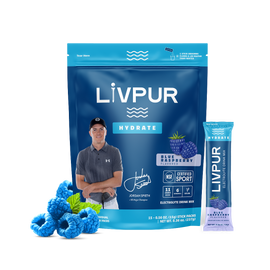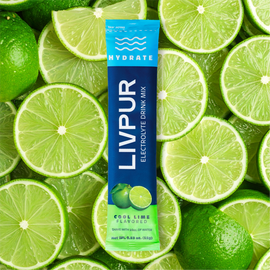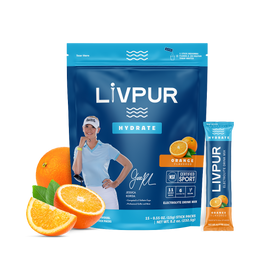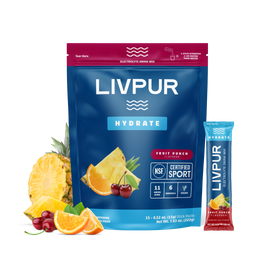October 16, 2023 • By Laura Onie • Blog
A Complete Introductory Guide to Amino Acids

We consume protein to ensure we have enough energy, can build or maintain muscle, and recover properly.
As we know, not all protein is created equal. That’s where a deeper understanding of amino acids comes into play.
Keep reading for a basic breakdown of amino acids, including the benefits, how to get them, and what to look for in a supplement.
What are amino acids?
Amino acids are best known as the building blocks of protein. They’re mostly made up of oxygen, nitrogen, and hydrogen, with a central “alpha” carbon.
To form protein, amino acid molecules link together in different configurations. The order and composition of the sequence will determine its role.
For example, the amino acid cysteine may dominate chains that make up keratin, the protein that serves as the structure for our hair and nails.
Naturally, this is a bit more complex than it sounds. A simple chain of amino acids isn’t exactly a protein, but a polypeptide. You need multiple polypeptides to create the protein.
The protein of your own body contains 20 different amino acids, but we consider nine of them essential since you can’t make them yourself.
We’ll go over that in just a minute, but for now, let’s take a quick look at the function of amino acids.
What do amino acids do?
You’d be hard-pressed to find a bodily process that isn’t dependent on amino acids. Whether you make them yourself or get them through food and supplements, amino acids influence our ability to:
- Properly digest food
- Transport nutrients
- Regulate or enhance the immune system
- Sustain or increase energy levels
- Build muscle, hair, and nails
- Repair tissue and heal wounds
- Get quality sleep
- Produce enzymes, neurotransmitters, and hormones
-
Regulate metabolism
List of Amino Acids
Amino acids can be broken down into three groups: essential, nonessential, and conditionally essential.
Essential Amino Acids
First, we have the nine essential amino acids. These are the amino acids our bodies can’t produce on their own; we get them from food and supplements.
- Phenylalanine: “Essential” is the best descriptor for phenylalanine, which assists us in using other amino acids. It’s also a precursor to tyrosine, making it especially important for brain function and nervous system health. It also influences eye, skin, and hair pigment.
- Threonine: Threonine is helpful for digestion and fat metabolism. It also plays an important role in heart, liver, and immune health. It can use other amino acids to create collagen, elastin, muscle, and connective tissue (tendons, ligaments, and cartilage).
- Tryptophan: Present in foods such as turkey and bananas, tryptophan can promote a sleepy, relaxed feeling. That’s because it helps our bodies create melatonin. It’s also vital for building serotonin as well as regulating our internal temperature and blood pressure.
- Methionine: Methionine is an important amino for making good use of minerals, as they help increase absorption. Plus, it helps synthesize the molecule that creates hormones such as norepinephrine and epinephrine.
- Valine: You’ve likely heard of BCAAs, branched-chain amino acids. Valine is one of three of these present in the essential group, making it a must for lean muscle growth. Along with other BCAAs, it’s also key for endurance and recovery.
- Leucine: Leucine is the next BCAA. In addition to the benefits for muscle-building and energy, leucine helps create growth hormones. This essential amino is also critical for wound healing and regulating blood sugar.
- Isoleucine: If muscle-building and explosive performance are your focus, look no further than to the last of the three branched-chain amino acids. Isoleucine is most present in muscle tissue and is critical to energy regulation.
- Lysine: Lysine helps build stronger bones thanks to its role in the absorption of calcium. It promotes healing and is necessary for healthy hormone production. Some research also suggests it has antiviral properties.
- Histidine: Histidine is important to your circadian rhythm, but if the word looks familiar, it’s best known for histamine production. It’s vital to our immune response, digestion, and sexual function. It lives in the proteins myoglobin and hemoglobin, which carry oxygen around the body.
Nonessential Amino Acids
Next, we have the nonessential group. Your body makes these amino acids, so in most cases, you don’t need to worry about getting them elsewhere.
- Alanine
- Arginine
- Asparagine
- Aspartic acid
- Cysteine
- Glutamic acid
- Glutamine
- Glycine
- Proline
- Serine
- Tyrosine
Conditionally Essential Amino Acids
In some cases, such as illness, injury, or pregnancy, you might need more of one of these nonessential amino acids:
- Arginine
- Cysteine
- Glutamine
- Glycine
- Proline
- Tyrosine
Essential Amino Acids: Benefits
While we’ve gone over both specific functions and larger roles, here are some reasons to pay more attention to your intake of essential amino acids.
Supporting a healthy immune system.
In particular, threonine, lysine, and isoleucine may supply the immune boost you’re looking for. Threonine, for example, is useful for the production of antibodies, the blood proteins that neutralize pathogens.
Maintaining muscle mass.
So, you’ve built muscle with protein and strength training. What happens if you ramp up the intensity, or clean up the rest of your diet? Without BCAAs, you may lose those gains. Some essential aminos help you preserve muscle while losing fat.
For optimal digestion.
A few key nonessentials like glutamine are what really help regulate digestion, but don’t forget our friend histidine. Histidine promotes the production of gastric juices, which protect the stomach lining, kill bacteria, and make the best of protein.
Sustaining productive energy levels.
All essential amino acids are good for energy levels, although BCAAs get special mention since they live and work right in the muscle. However, before you load up on BCAAs alone, be aware that they work best with the other essentials.
May be a mood balancer.
Essentials like methionine and tryptophan are subject to research for their effects on mood disorders. The treatment of any disorder is best left to health professionals. Still, it’s helpful to know that some essential amino acids are precursors to mood-regulating brain chemicals that support a steadier state of wellbeing.
To support better hydration.
Many overlook the impact of amino acids when rehydrating. Along with minerals, some amino acids can support the absorption of sodium. Read our blog about amino acids, electrolytes, and hydration to find out more.
Foods Containing Amino Acids
Before you consider a supplement, assess your nutrition. The most reliable way to get the long-term benefits is to incorporate an abundant, well-rounded lineup of essential amino acids into your daily diet.
First up, we have foods that are known as complete proteins. Complete proteins contain all essential and nonessential amino acids, even though their protein content will vary. They include:
- Poultry
- Fish
- Pork
- Seafood
- Red meat
- Milk
- Cheese
- Yogurt
- Eggs
- Soy (including tofu and edamame)
- Quinoa
- Buckwheat
- Hemp seeds
If you primarily eat plant-based, you might be lacking variety among complete proteins. That’s why it’s best to combine your soy, quinoa, and more with incomplete proteins.
If you’re not eating soy, buckwheat, or quinoa, combine the following foods to reach a more complete amino profile:
- Beans and legumes: From black beans to chickpeas, these can be a good source of essentials like methionine.
- Cruciferous vegetables: Veggies such as Brussels sprouts, broccoli, and cauliflower are a healthy source of isoleucine and valine.
- Greens: The darker the green, the better. Kale, chard, and collard greens may provide good tryptophan, leucine, and threonine content.
- Fruit: Many fruits are a pretty good source of leucine. Apples in particular contain a healthy number of amino acids. One banana may have as much as 11 mg of tryptophan. Pineapple, berries, and kiwi are also good picks.
- Mixed nuts: A diverse mixture of nuts and seeds is useful for combining various amino acids in one nutrient-dense snack. Almonds, peanuts, cashews, hazelnuts, and pistachios all provide some essential aminos.
Features of the Best Amino Acid Supplements
A common question with any supplement is, “How long will it take to work?” Perhaps the best attribute of essential amino acids is how easy it is to absorb them. If we’re eating them, it can take a few hours, but crystalline supplement formulas can deliver the benefits in half an hour, which is why they’re preferred for purposes like athletic performance.
However, when it comes to selecting a supplement, go a bit slower and choose wisely. The following criteria can point you toward the best.
-
Make sure you’re clear on which amino acids it contains.
And while you’re at it, maybe check for some other ingredients you need. The beauty of some high-quality products available today is that they combine amino acids with vitamins, minerals, adaptogens, and more to target multiple areas of wellness at once.
It’s great news for those of us who hate clutter and don’t want the hassle of reordering 10 different supplements. As it pertains to aminos, never assume that a supplement has them all. Check the fine print. Products that only contain BCAAs are usually clearly labeled as such, but others may contain some essentials with a few nonessentials for additional benefits.
-
Choose a supplement that’s low in sugar.
Amino acids are great for every part of your body except maybe your tastebuds. To compensate, a lot of brands will load the product down with sugar or artificial flavor. A little sugar is fine, and natural flavors go a long way, but be mindful of these.
-
Always look for independent testing and certifications. Third-party testing and related certifications can reassure us that a supplement is as high-quality as a company would like to claim.
For example, LivPur Nutrition products are NSF Certified for Sport ®. Not only does this guarantee that it’s free of banned substances, but that it adheres to Good Manufacturing Practices, has been audited multiple times, and contains what the label says.
Who should take an amino acid supplement?
Amino acid supplements are commonplace among bodybuilders and athletes, but plenty of others can benefit, too. For instance, vegans and vegetarians may supplement due to insufficient complete protein in the diet.
Furthermore, some older adults take essential amino acids for potential energy and cognitive benefits. Others swear by it to support healthy-looking skin or as a boost during recovery from injury or illness.
It’s also an option for those who are regularly active and want help maintaining their existing muscle mass and body composition without doing as much resistance training.
Who shouldn’t take an amino acid supplement?
Anyone on medication must speak to a healthcare professional first as some supplements may interact with prescription drugs. Amino acids such as BCAAs are also not recommended for those with amyotrophic lateral sclerosis (ALS).
Ultimately, it’s best to speak to your doctor before trying any new supplement. They’ll also be your first contact if you think you have symptoms of an amino acid deficiency, such as fatigue, muscle loss, or slow healing.
When should I take my amino acid supplement?
In many cases, it depends on why you’re taking it. Athletes and other gym-goers will take it shortly before and/or after their workouts. Some use formulas for sleep, so they’ll take it later in the afternoon or evening.
Check the recommended use on the label; some types are best taken on an empty stomach and will instruct the user to take it between meals. This is usually true for those who take essential amino acids regularly and not just for workout performance.
Learn More from LivPur
Nothing beats the protein we get from a healthy, balanced diet. On the whole, it supplies all of the essential amino acids we need for lean muscle, healthy sleep, and enough energy to get life done.
To maximize these efforts, especially in the gym, on the field, or amid a busy schedule, there’s LivPur.
LivPur products use amino acids in combination with other nutrients to support hydration, energy, and recovery – without tons of added sugar or artificial flavors. Learn more about us today and find simple, accessible ways to support your unique lifestyle.















